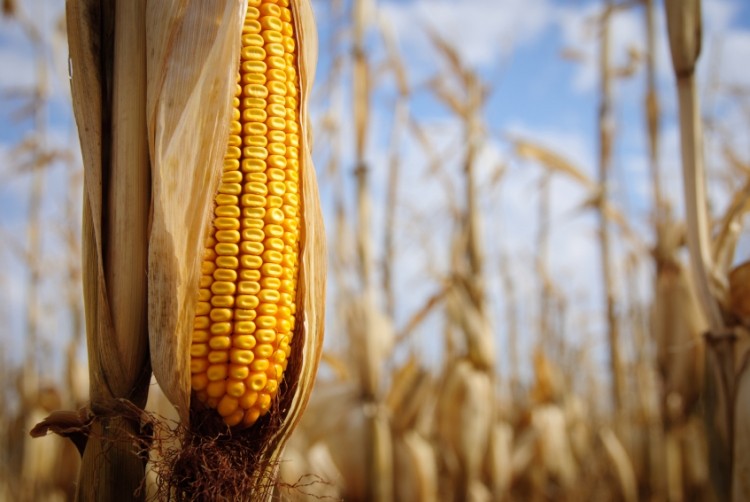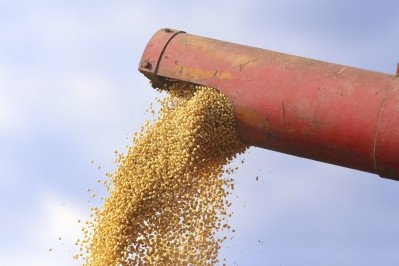Brazil corn crop to dampen prices, increase US export competition

Details of feed crop production for the country were released in an agricultural attaché’s report through the Foreign Agricultural Service at the US Department of Agriculture (USDA).
Information on production of crops including corn and soybeans for countries in South America is of interest as producers are trying to picture output from countries including Brazil and Argentina, said Todd Davis, assistant extension professor in crop economics marketing and management at the University of Kentucky.
“The US corn and soybean markets benefited from a production hiccup [there] last year,” he told us. “Corn and soybean crops had production problems in Argentina and Brazil last year – as those two countries produced large crops [they create] a lot more competition in the export market.”
The export windows could be closing for us and switching to South America,” he said.
Brazil is currently seeing record corn production, increased stocks and the expectation of low commodity prices, said the USDA. However, wheat production has been reduced because of low prices.
Corn production, feeding
For 2016/17 the area planted in corn is expected to grow to 17m hectares, said the USDA. High prices at the end of 2016 encouraged additional feed crop planting.
Based on good yields in the first crop and favorable conditions for the second corn planting, production for 2016/17 has been forecast at a record 93m metric tons.
“The second crop accounts for about two-thirds of the total corn crop and is planted directly after soybeans are harvested,” the department said. “If the rains in April are well distributed, the second ‘safrinha’ corn crop will see good yields.”
Ending stocks were estimated to be 11.1m metric tons, a 70% increase. Additionally, because of the global glut of corn, prices are anticipated to drop – potentially below the government-set minimum price, said the department. “This could possibly force the government to intervene with a stocks acquisition program which would further increase stocks, but reduce the price fluctuations seen in 2016,” it added.
In 2017/18 the amount planted is predicted to drop to 16m hectares, and production estimates for the year were lowered to 85m metric tons, said the USDA.
However, consumption for 2016/17 is predicted to grow about 1% from use in the poultry and pork sectors, reaching use levels of 59m metric tons, the department said. The amount of cattle being fed corn also continues to increase and saw 2% growth from 2015 to 2016.
“Meat exports are currently being impacted by the ‘Weak Meat’ scandal, which closed down 21 meat processing plants due to allegations of bribery that allowed tainted meat onto the market,” the department said. “However, this shouldn’t have an impact on feed over the coming year.”
Although there was growth in feed and other uses for corn, the supply is not expected to be consumed by the domestic market, said the department. “Stocks are expected to increase sharply, but limited on-farm storage may force producers to choose between storing either corn or soybeans, as both are record crops and the current pace of commercialization for soybeans is slow,” it added.
Exports in 2016/17 are predicted to double from the previous year to reach 30m metric tons, but may drop slightly in 2017/18, said the department. “Iran, Vietnam, and Japan currently account for half of Brazil’s export markets, but Brazil is actively seeking to gain market share in Mexico, which is traditionally supplied by the United States,” it added.
Imports for 2016/17 were set at 600,000 metric tons, a drop from the 3.4m metric tons the previous year, said the department. For 2017/18 the amount is predicted to fall again to 500,000 metric tons.
Wheat feed, production
The area planted in wheat in 2017/18 is anticipated to drop by about 2m hectares, said the USDA. “A small amount of area may move to canola production, due to high prices for canola in the state of Rio Grande do Sul,” it added.
Production has been forecasted down to 6m metric tons, the department said. However, the limited production is anticipated to help boost prices above government-set minimums.
Imports in 2017/18 are expected to drop about 3% from the previous year to 6.5m metric tons, said the department. However, imports for 2016/17 are thought to remain at about 6.7m metric tons. Also during that period, the US was able to gain market share.
Exports for 2016/17 are set at 1.5m metric tons, a 40% increase from the previous year, the department said. However, they are expected to return to 2015/16 levels for the coming export year.
“[In] 2016/2017 wheat consumption is expected to increase 1m metric tons from the previous year to 11.5m metric tons due to an improving economic situation and a growing use of wheat for feed in 2016,” said the USDA. “Feed wheat in 2016/2017 is estimated at 700,000 metric tons, up 40% from the previous year due to high domestic corn prices in the last half of 2016. [But,] 2017/2018 consumption is expected to decrease slightly to 11m metric tons based on reduced feed use and diet trends.”












